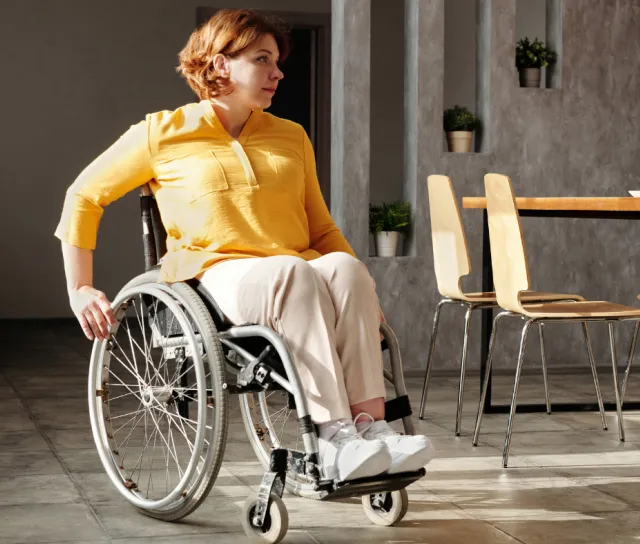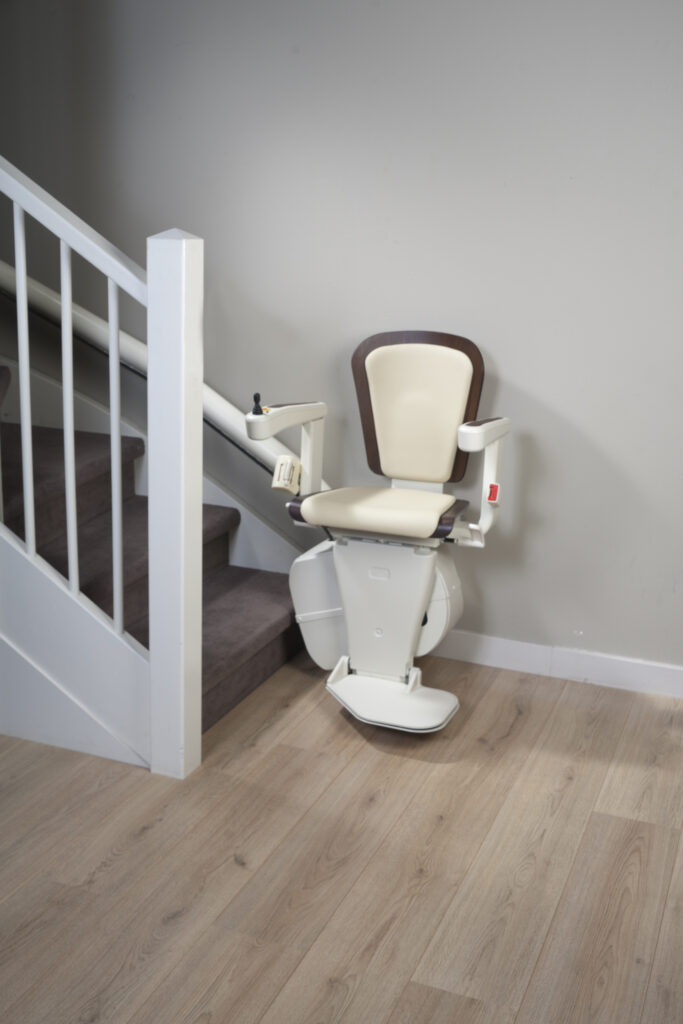How To Make Your Home Wheelchair Friendly

In this blog, we are going to share our tips to make your home wheelchair friendly.
When someone finds themselves in need of a wheelchair, it can be startling to find just how inaccessible their home is. Whether the wheelchair use is permanent or temporary, making changes to your home is essential.
Thankfully, you don’t always have to move house or remodel your home to make it wheelchair friendly. Instead, there is a range of changes (some big and some small), that can make your home more accessible for wheelchair users.
Table of Contents
Add A Stairlift
Without a stairlift, most wheelchair users will not be able to get up or down the stairs in your home. Unless you are able to have a bedroom and bathroom on the ground floor, having a stairlift is crucial.
We offer a range of stairlift models available for curved or straight staircases. To save on costs, we also offer reconditioned stairlifts, which have been fully serviced and rigorously tested to ensure it is in full working condition.
Stairlifts are also available to rent, which is ideal if the wheelchair is only in use for a few months. At Senior Stairlifts, we provide a professional, friendly and low-cost service. Same day and next day installation are available (subject to survey) and our experienced team are available 24/7. The first step is to book in a free no-obligation home survey with one of our engineers.
Remember, stairlifts are nor just for seniors, they are for everyone and anyone who is experiencing mobility issues.

Adapt The Bathroom
Adapting the bathroom is one of the first tasks that should be done to make your home wheelchair friendly. Without an accessible bathroom, a wheelchair user will struggle to bathe and use the toilet safely and hygienically.
The toilet should have grab rails on either sides and the sink should have under counter access to allow space for the wheelchair. There should be a walk-in shower (with no steps) or you could opt for a wet room.
A disabled shower seat should also be added. If you don’t have the funds to install a walk-in bath, then adding a bath seat is a more affordable option.
Alternatively, adding a modular home extension to your house may be a better option. Modular home extensions, designed and installed by the same team that build Changing Places Toilets, are perfect if someone in your household is living with lifelong disabilities.
The extensions feature a spacious, accessible bedroom and fully-fitted wetroom. The wet room can include additional features, such as a hoist if required. Each extension is installed quickly with minimal disruption, enabling your family to stay together and live comfortably in your existing home.
Replace Carpets
If any room in your home has carpeted floors, these should be replaced with a hard floor option. Most carpets provide resistance, making it harder for wheelchair users to manoeuvre, so therefore installing a hard floor should make it easier for a wheelchair user to move around.
You should opt for a surface that is slip-resistant and easy to clean. Hardwood, laminate, ceramic tiles and vinyl are all excellent options, with vinyl being the most affordable option.
Relocated Light Switches
Light switches are often overlooked when adapting a home, but they are an important change to make. Wall switches should be lowered to ensure a wheelchair user can reach them comfortably, and switches behind countertops should be placed elsewhere within reach.
Alternatively, you could use smart technology solutions to control the lights, heating, home security, TV and even the blinds.
Widen Doorframes
Doorways in your home should be at least 32” wide to allow a wheelchair user to get through safely, but doorways as wide as 36” are best. You can widen your doorways by installing offset hinges or removing the doors (and the trim) altogether.
If this doesn’t provide a space that is wide enough, you may need to hire a construction professional as the doorframe itself will need widening.
Think Carefully About Furniture Placement
Furniture placement is easy to change and can make a huge difference. All walkways, hallways and rooms should have ample space for a wheelchair user to manoeuvre safely.
Removing any floor ornaments or furniture that may be causing obstruction and ensure there is always a spacious and clear walkway.
Adapt The Kitchen
When it comes to making the kitchen wheelchair friendly, you can either make adaptations to the existing kitchen or have the kitchen fully remodelled to suit your needs. However, the latter may be very costly.
An accessible kitchen will need lower countertops with space underneath to fit a wheelchair and high wall cabinets should be replaced with lower storage cupboards or roll-out style cabinets. There should be space underneath the sink and kitchen appliances should be lowered to a maximum height of 31”.
Get In Touch
Considering installing a stairlift in your home to make it more wheelchair friendly? Get in touch with Senior Stairlifts today. You can contact us for a chat, either by email or call us on 0800 995 6019.
You can also request a brochure to learn more about our stairlifts.